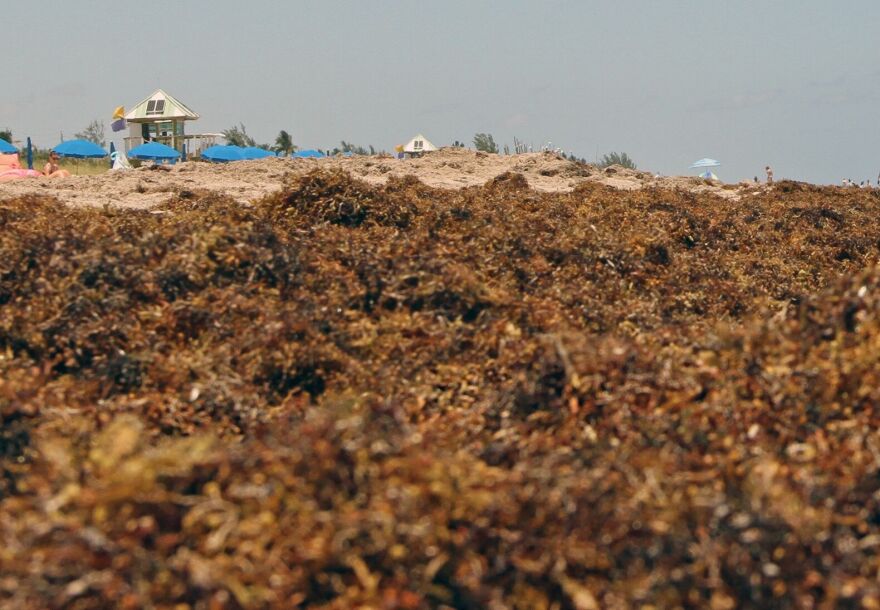By Carrie Pinkard
A dark mass stretches from West Africa to the Gulf of Mexico. It’s slowly growing, and choking the life out of some marine animals.
The mass is a giant seaweed bloom called the Great Atlantic Sargassum Belt.
Researchers at the University of South Florida College of Marine Science discovered the belt and the seasonal pattern of the blooms. The seaweed usually flares up in the summer months, with the worst blooms occurring in July and August.
Sargassum seaweed was known to live in the Sargasso Sea, located in the North Atlantic Ocean.
The seaweed isn’t inherently dangerous to humans, but it does emit a foul odor that could cause problems for people who have respiratory issues. It also mats up in bunches near the coastline, making swimming more difficult.

According to Mengqiu Wang, a researcher at USF College of Marine Science, Sargassum is helpful in the open ocean.
“Sargassum provides a great ecological value by serving as a habitat and refuge for marine animals like turtles, crabs, fish, and birds,” she said.
However, when there are dense patches of the seaweed near the coast, it smothers marine life and makes it difficult for fish to breathe.
Wang said there’s a possibility that the seaweed blooms are growing because of nutrient run-off.
“If people can reduce the nutrient supply from the Amazon deforestation, and the fertilizer usage, that will be helpful because the Sargassum could utilize those excessive nutrients to grow.
Wang is a postdoctoral scholar in Chuanmin Hu’s Optical Oceanography lab at USF College of Marine Science. The research team also included members from USF, Florida Atlantic University, and Georgia Institute of Technology.
Wang and the team of researchers said in their study that they think the massive seaweed bloom could be the new normal.
“There's a high chance we're still going to see a lot of them in future years,” Wang said. “So people should find more strategies to handle this problem, and understand the impacts to the ecosystem and to humans as well.”





